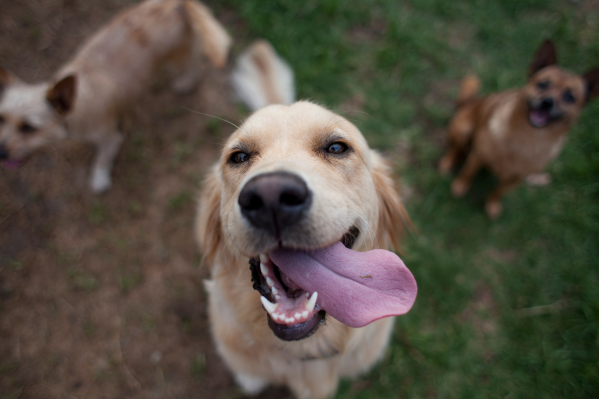It's no secret that adequate exercise is a key pillar of health for our canine companions. Not getting enough can lead to obesity, behavioral changes, and a host of other mental and physical ailments.
But is there such thing as too much exercise? Absolutely. Similar to humans, there's a point at which they can be pushed beyond their limits and the consequences can be serious.
As a pet parent, it's important to strike that balance and know the signs that you're over-exercising your dog. Your veterinarian can help you understand how much exercise and what type of activity is appropriate for your dog based on their health, age, weight, and lifestyle.
If you notice any of these signs, however, it might be time to take your activity down a notch.
5 signs you're over-exercising your dog
1. Extreme fatigue
Of course it's normal for your dog to be tired after exercising—every body needs time to recover. But if you notice your pup seems especially exhausted and appears to be fatigued beyond their normal recovery time, this is an indication that they've overexerted themselves. You may notice that they have a difficult time getting up from a nap and may not be interested in typical activities like playing or walking.
2. Limping
If you notice limping or lameness (an inability to properly use one or more limbs), this is another sign that you're over-exercising your dog. Limping and lameness can occur as a result of strains, sprains, and other injuries, so if you see this, it's important to reach out to your veterinarian or a Pawp Pro and get your dog's health assessed.
3. Behavioral changes
Physical and mental exhaustion can lead to behavioral changes in dogs, including anxiety, irritability, aggression, and restlessness. If you notice anything outside of their normal behavioral repertoire after exercise, it may indicate that the level of activity is too high.
You may also notice that they're reluctant to exercise again in the days following physical activity.
4. Weight loss
Rapid changes in weight and body condition can be a sign that you're over-exercising your dog. While it's certainly important to ensure that your dog is not overweight, if they do need to lose weight, it's vital that you help them do so safely.
Another associated sign of over-exercising is reduced appetite, which can in turn lead to weight loss. Your veterinarian will be able to help you determine an ideal body weight for your dog and the appropriate food and exercise regimen to help them maintain it.
5. Joint or muscle stiffness
Over-exercising can cause muscle stiffness and joint pain. If your pup is slow to move or appears to be stiff or uncomfortable, it might be time to reassess their exercise regimen. Continuing to over-exercise your dog can lead to a host of other ailments like hip dysplasia or aggravation of conditions like arthritis.
The dangers of over-exercising your dog
Over-exercising your dog can not only lead to physical injuries and joint and bone issues, but can also lead to dehydration and heat stroke, exhaustion, decreased immune function, behavioral issues, and long-term conditions like chronic pain and arthritis.
So while physical activity is vital to your pup's health and happiness, there is such thing as too much exercise. Talk to the Pros at Pawp if you have questions about your dog's exercise routine and they can point you in the right direction.
